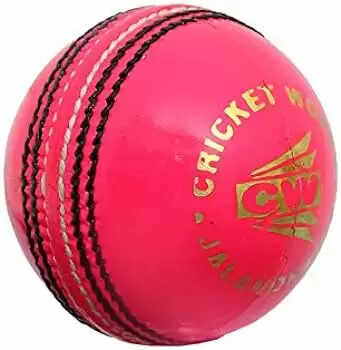Top 3 Types Of Cricket Ball Types

Cricket stands out from other sports played worldwide due to its unique complexity and technical nature. Unlike football or hockey, where scoring a goal is the primary objective, or basketball, which involves scoring points by shooting the ball through a hoop, cricket involves intricate strategies and a deeper level of technical skill. The game is played in three formats, each with its distinct duration: T20s (20 overs), ODIs (50 overs), and Test cricket (5 days). Each format utilizes different types of cricket balls, which significantly influence gameplay based on varying conditions. Here’s an overview of the different types of cricket balls used from local street cricket to international matches.
Types of Cricket Balls
1. Balls for Gully Cricket
- Sponge Ball: Ideal for very young children (ages 3-5), these lightweight and soft balls are safe for indoor play but not suitable for outdoor cricket due to their unpredictable flight.
- Plastic Ball: Commonly used in casual street cricket, these balls can vary greatly in quality and price, ranging from ₹6 to ₹120 each.
- Rubber Ball: Suitable for community cricket games, these balls mimic the appearance of leather balls but lack the same performance characteristics. They typically cost between ₹15 and ₹70.
- Tennis Ball: Heavier than rubber balls, hard tennis balls, especially those from brands like Cosco, are popular for playground cricket. Prices range from ₹25 to ₹90 depending on the type and manufacturer.
2. Training Level Balls
- Synthetic Cricket Balls: These balls, made to resemble leather balls but lighter, are used in training to improve fielding and batting skills. Prices range from ₹120 to ₹500.
- Hockey Ball: Used in drills to enhance stroke play, particularly for hanging ball exercises to improve front foot and back foot defense.
- Cork Ball: Resembling leather balls but made entirely of cork, these balls are used for training on concrete and mat pitches. They are less durable, lasting about 50 overs, and cost between ₹350 and ₹550.
3. International Level Balls
- Red Leather Balls:
- Kookaburra: Used in many countries for Test matches, this ball maintains its seam for about 20-25 overs. It is mostly machine-made.
- Dukes: Favored in England and the West Indies, this ball is known for maintaining its seam for up to 50 overs, making it ideal for seam bowlers.
- SG: Used exclusively in India, this ball loses its shine quickly but retains its seam, aiding spin bowlers. Prices range from ₹650 to ₹2000.
- White Leather Ball: Introduced for night games and one-day matches, this ball was first used in World Series Cricket in 1977. The white Kookaburra ball is effective for the first 20 overs but loses effectiveness as the game progresses.
- Pink Leather Ball: Created for day-night Test matches, the pink ball remains visible under floodlights, preventing camouflage with white jerseys. It is significantly more expensive than SG balls used in India, costing around ₹10,000 to ₹12,000.

Each type of cricket ball serves a specific purpose and is chosen based on the format of the game and the playing conditions, from the informal gully cricket matches to the highly competitive international games.

